How to Make Pesto like an Italian Grandmother
A vibrant pesto recipe taught to me by my friend Francesca's mother who came to visit from Genoa, Italy. Made with hand-chopped basil, garlic, Parmesan, olive oil and pine nuts. The real deal.
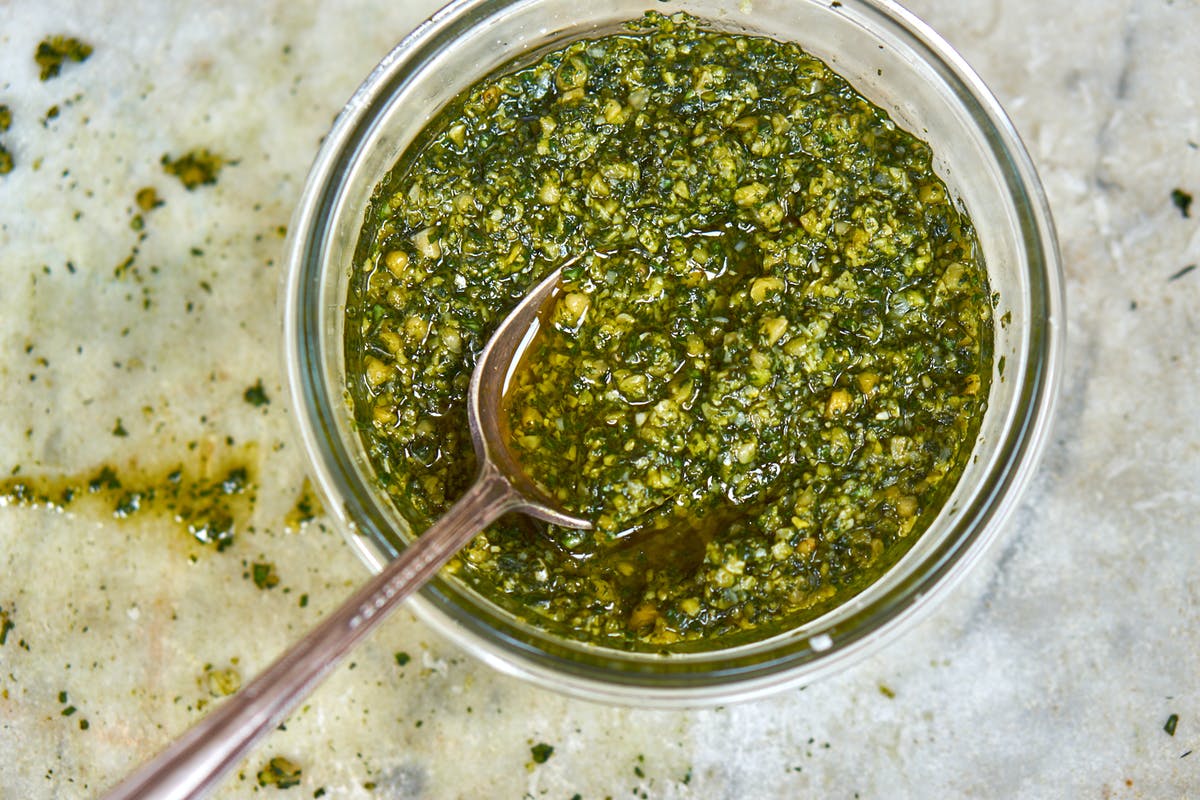
If you've ever tasted pesto in Italy you know that the pesto here in the United States just isn't the same. I received a lesson in how to make pesto from a real Italian grandmother last week and now I understand the difference and what makes this pesto recipe so special.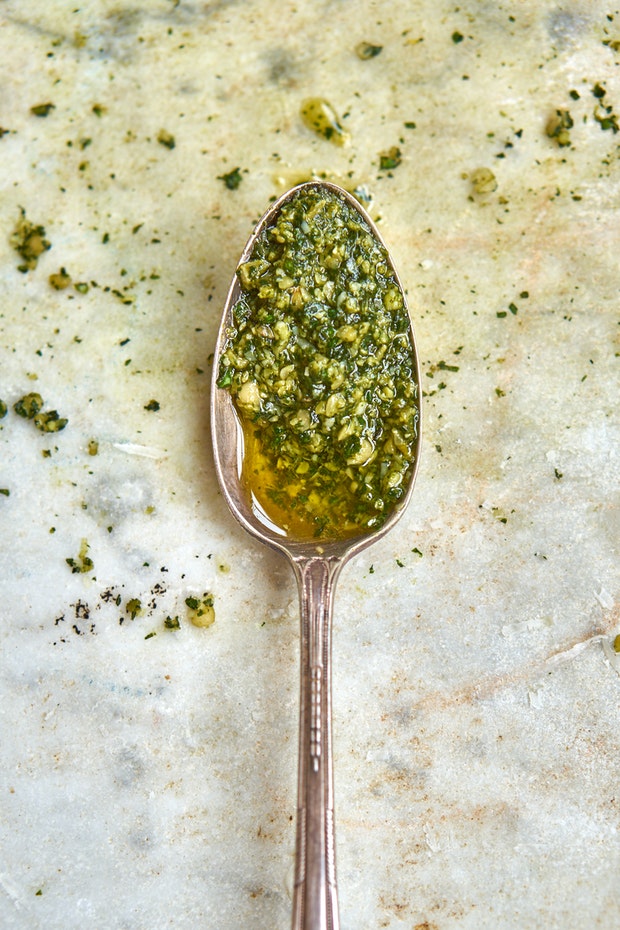
A Special Pesto
My friend Francesca makes the trip from her small town near the pesto-epicenter of Genoa, Italy to San Francisco once or twice a year - this time (lucky for us) she brought her mom and two-year old son Mattia. Her mom makes a beautiful pesto (and perfectly light, potato gnocchi to go along with it) and offered to show me and my friend Jen how it is done. I have to say, it was a complete game-changer. If you love pesto, you really have to try this. Her technique results in an incredibly special version.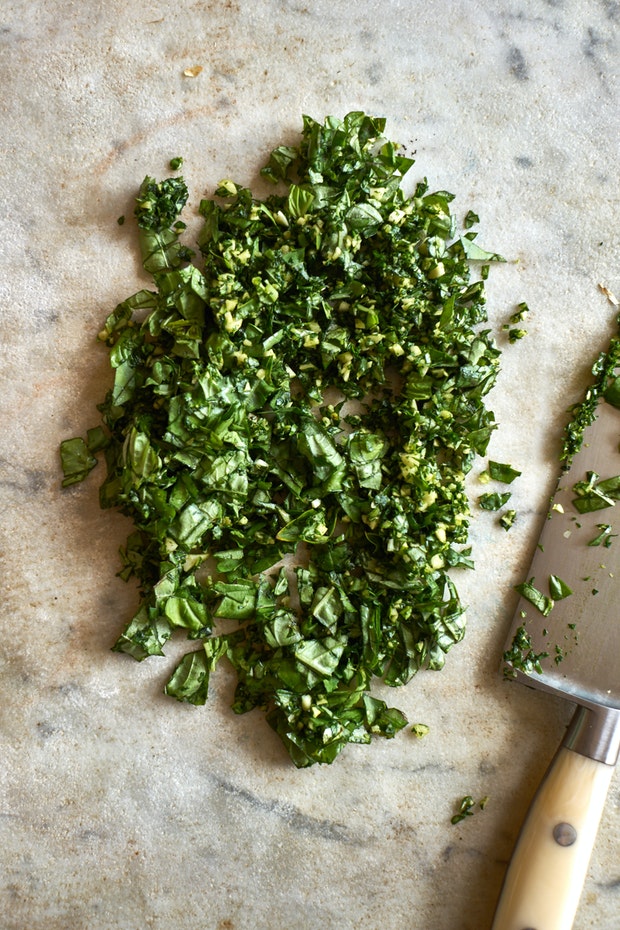
Pesto Technique
Most of the pesto you encounter here in the U.S. is different for a few reasons. First off, most of what you see is made by machine, usually a food processor or hand blender. The cook will pulse into a paste. This holds true even if it is homemade. Don't get me wrong, it usually tastes good, but because the ingredients aren't hand chopped you end up with a texture that is more like like a moist, uniform paste with little to no definition between ingredients. You also might see pesto made with a mortar and pestle. This pesto is something different.
During my lesson I quickly began to realize chopping all the ingredients by hand is key because this prevents the ingredients from becoming a completely homogenized emulsion or paste. When you dress a pasta with a pesto that has been hand chopped the minuscule flecks of basil will separate from the olive oil, pine nuts, and Parmesan cheese in places. You get definition between ingredients, and bright flavors pop in a way they don't when they've been blended into one.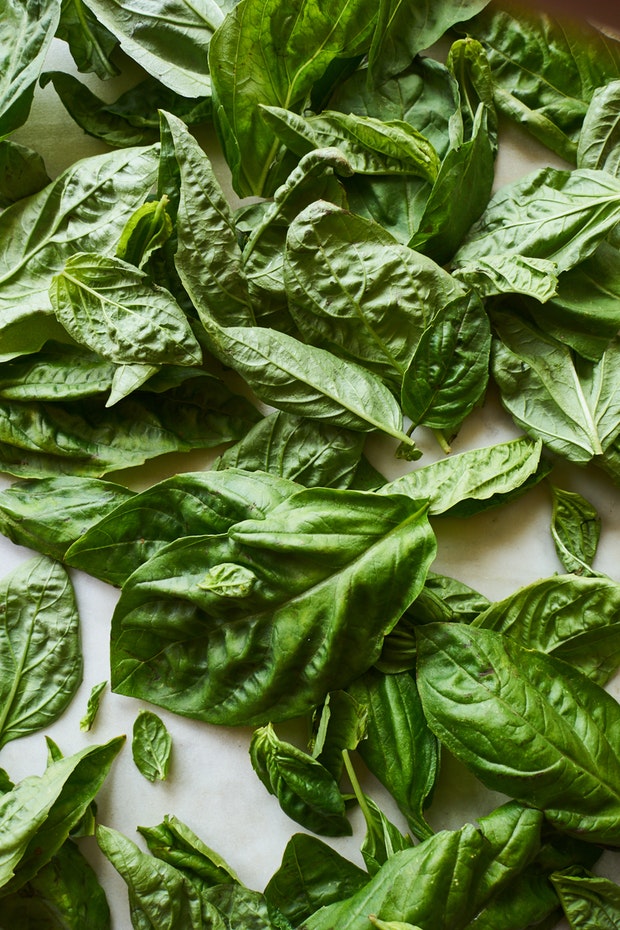
Video: How to Make Pesto
Choosing The Best Basil for Making Pesto
Genovese pesto is famous in part because it is often made with young, small fresh basil leaves. For us non-Italians it is easy to find Genovese basil in stores and at farmer's markets, particularly in the summer. That said, chances are it wasn't picked young. I wouldn't worry about it too much, simply by hand chopping all your ingredients, you will see a major shift in personality of your pesto.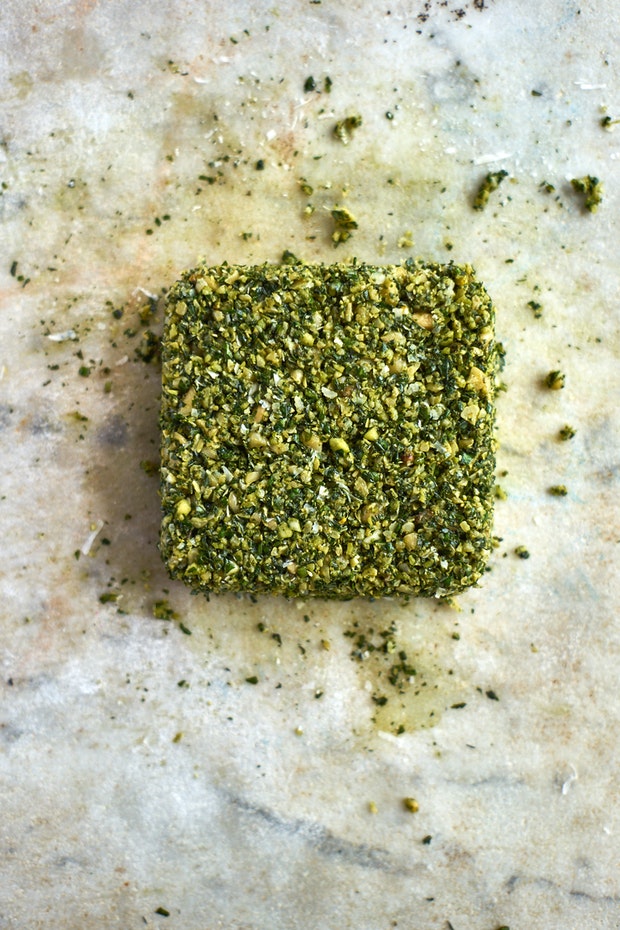
Chop by Hand or Blender?
Per the above, this pesto celebrates hand-chopping. Correspondingly, if you're serious about making good pesto using the hand-chop technique you'll need a sharp (preferably large, single blade) mezzaluna, or a good knife. The sharpness of your blade absolutely matters because you don't want to bruise or tear your basil. Whatever you use to chop, make sure it has a sharp blade or the basil will turn dark. Chopping the ingredients will take twenty minutes or so. Once you chop your ingredients, you'll form them into a cake, pictured above. You add olive oil to this cake, and it's magic.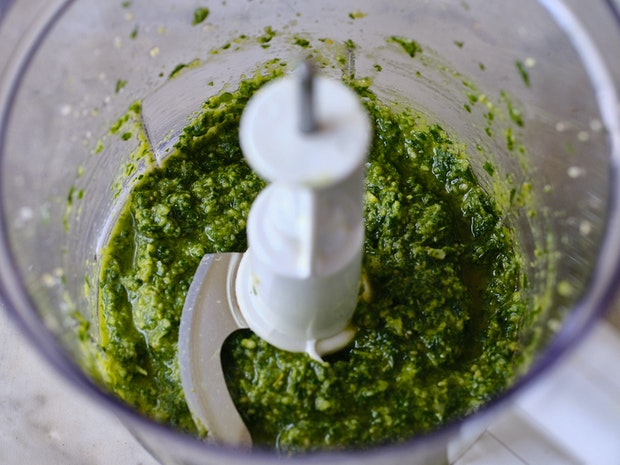
How to Make Pesto with a Blender or Food Processor
We don't always have time to hand chop, I get it! If you want to make pesto using a blender or food processor here's how. Pulse the garlic and pine nuts into a chunky paste. Use the quantities in the recipe below. Add the basil and pulse into a bright green paste. Pulse in the olive oil, adding more if you want a thinner texture. Stir in the grated cheese by hand and season with a bit of salt if needed. Some days, are going to be blender pesto days!
How to Store Basil
There are a number of great ways to keep basil fresh until you’re ready to use it. If you think you’ll use it within a day or two, keep the basil in a jar of water on your countertop. The way you’d keep a bouquet of flowers. If you think it will be a few days beyond that, treat the basil like you would salad greens. Give the basil a gentle wash, then wrap the leaves in a clean kitchen towel or paper towels, place this in a baggie, and refrigerate until ready to use.
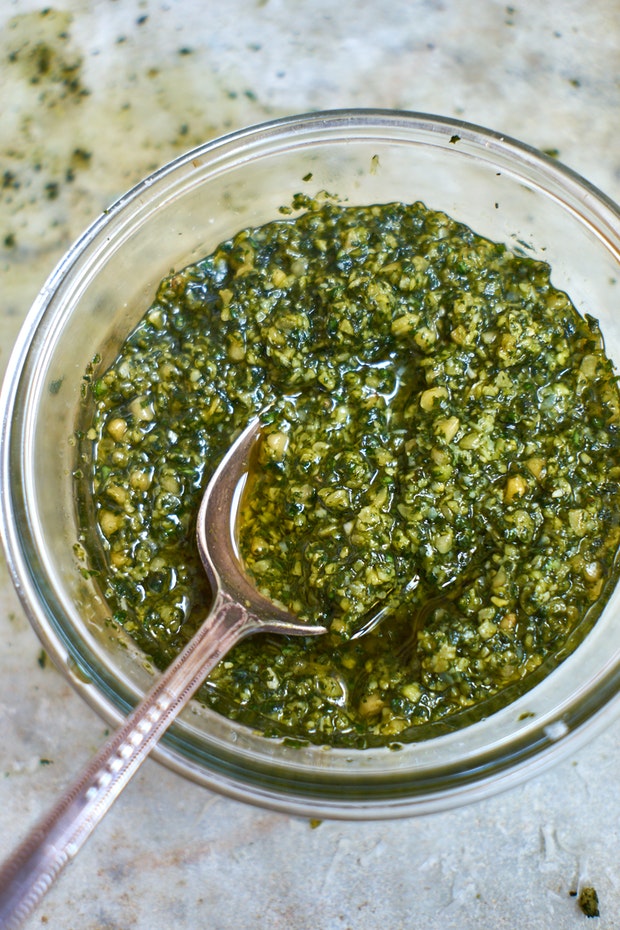
Favorite Ways to Use Pesto
What do you eat pesto with? There are so many great ways to use pesto - some traditional, many not. I love a thick slather as the base sauce on a good pizza (this page actually has an extended list of pizza topping ideas). Or, on a tart before adding other toppings. If you have a slab of sourdough coming off the grill, a bit of pesto, some seasonal roasted veggies, and a dusting of cheese makes an easy meal. And because it lends a bolt of flavor, I love to whisk a dollop into scrambled eggs, or an omelette, mashed potatoes, or on baked potatoes.
How to Store Pesto
Generally speaking, store any pesto you might use in the next day or two, refrigerated, under a thin film of olive oil. You can also freeze it in snack-sized baggies. Thaw and toss with whatever gnocchi, ravioli, or other favorite pasta you like - and a good splash of pasta water!
- How Do I Keep Pesto from Turning Brown? There are a couple ways to keep your pesto bright green. Browning comes from oxidizing. One way to prevent this is to limit exposure to air. Because of this, I like to keep pesto in my narrowest jar with a thin layer of olive oil on top so that no pesto is exposed to air. The other option is to blanch your basil leaves briefly, and proceed with your pesto-making from there. I almost always opt for option one.
- Can Pesto Be Frozen? Yes! You can absolutely freeze pesto. Any pesto you won’t use within a couple days, transfer to freezer baggies. Freeze flat, and break off chunks of pesto to use whenever you need it. When you need larger quantities defrost the entire bag either in the refrigerator or on your countertop.
Pesto Variations
Don't limit yourself to basil pesto. You can absolutely experiment with a blend of other herbs as well. You can add anything from parsley to marjoram (a favorite!), mint to fresh oregano to your basil base. Or leave the basil out entirely! I like to add citrus zest on occasion, or switch up the type of nuts I use - toasted almonds and walnuts are favorites.
Let me know if you try this and what you think!
More Pasta Recipes
- Homemade Pasta
- Pappardelle
- Cavatelli
- Pici
- Beet Fettuccine
- Mushroom Lasagna
- Pasta with Crushed Creamy Walnut Sauce
- Stuffed Shells
- Last Minute Red Lasagna
- more pasta recipes
Favorite Pasta Sauces
Other Favorite Italian Recipes
How to Make Pesto like an Italian Grandmother
One key to perfect pesto is chopping all the ingredients by hand, preferably with a sharp mezzaluna or knife. This pesto will keep a bit in the refrigerator, but it really hits its peak when served soon after it is made. The technique here is: chop a bit, add some ingredients, chop some more. I think part of the reason she does it this way, instead of chopping everything all at once, is because some things get chopped into oblivion. Other ingredients, not as much. It encourages a spectrum of cut sizes throughout the pesto contributing to the overall texture. All told, the chopping took me a leisurely twenty to thirty minutes, I wasn't in any particular rush. You'll also notice this recipe doesn't have any added salt (just the saltiness from the cheese), make sure your pasta water is well salted if you are going to use this pesto on pasta. If you skip it the overall flavor profile will fall flat. Also, be sure to adjust for seasoning before serving. With food this simple, you need to get the seasoning right. Trust your tastebuds.
- 1 large bunch of basil, leaves only, washed and dried
- 3 medium cloves of garlic
- one small handful of raw pine nuts
- roughly 3/4 cup Parmesan, loosely packed and freshly grated
- A few tablespoons of extra-virgin olive oil
-
Start chopping the garlic along with about 1/3 of the basil leaves. Once this is loosely chopped add more basil, chop some more, add the rest of the basil, chop some more. I scrape and chop, gather and chop. At this point the basil and garlic should be a very fine mince. Add about half the pine nuts, chop. Add the rest of the pine nuts, chop. Add half of the Parmesan, chop. Add the rest of the Parmesan, and chop. In the end you want a chop so fine that you can press all the ingredients into a basil "cake" - see the photo up above. Transfer the pesto "cake" to a small bowl (not much bigger than the cake).
-
Cover the pesto "cake" with a bit of olive oil. It doesn't take much, just a few tablespoons. At this point, you can set the pesto aside, or place it in the refrigerator until you are ready to use it. Just before serving, give the pesto a quick stir to incorporate some of the oil into the basil. Francesca's mom occasionally thins the pesto with a splash of pasta water for more coverage, but for our gnocchi this wasn't necessary.


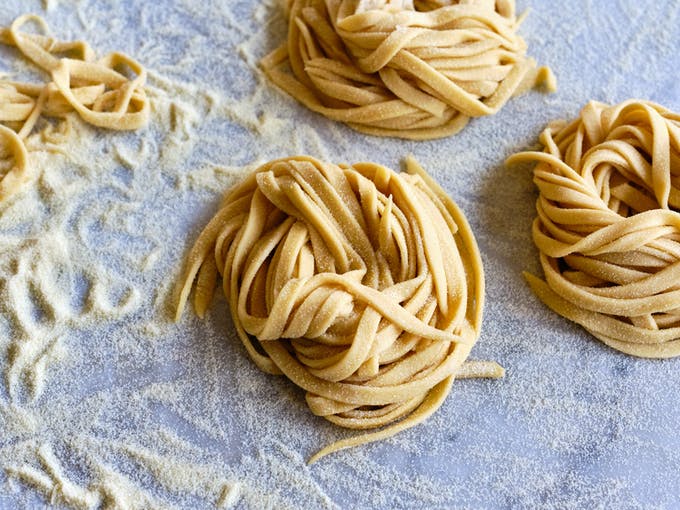
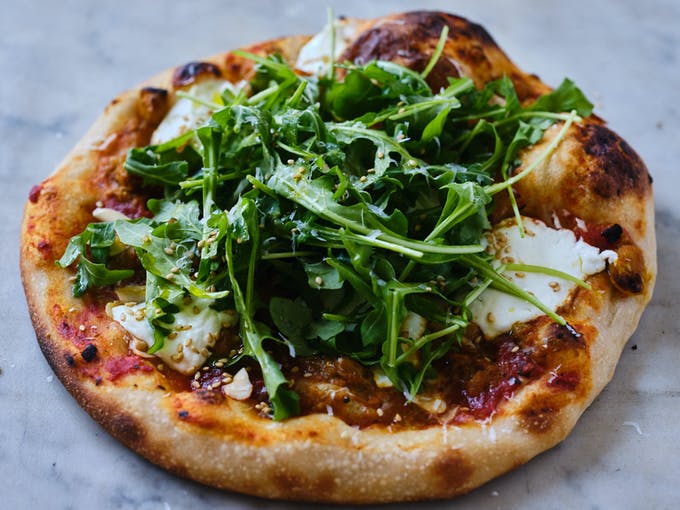
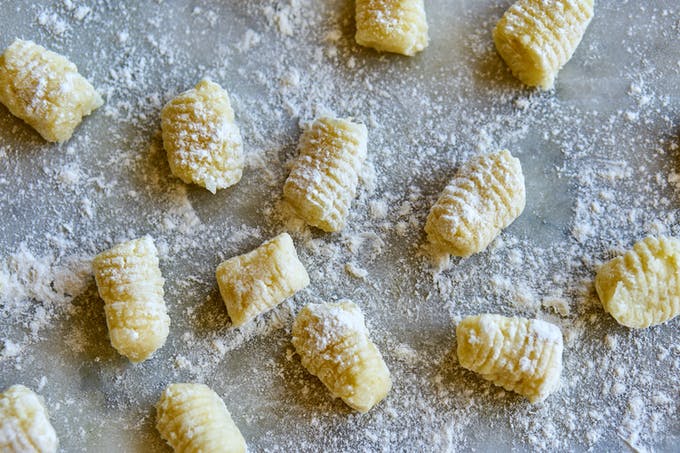
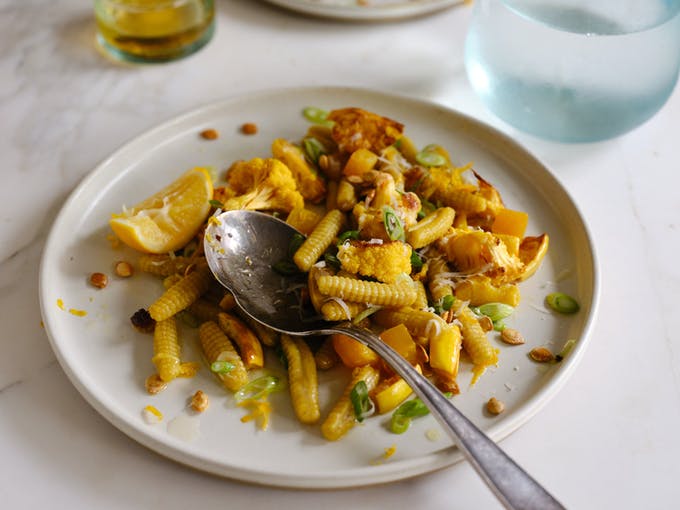
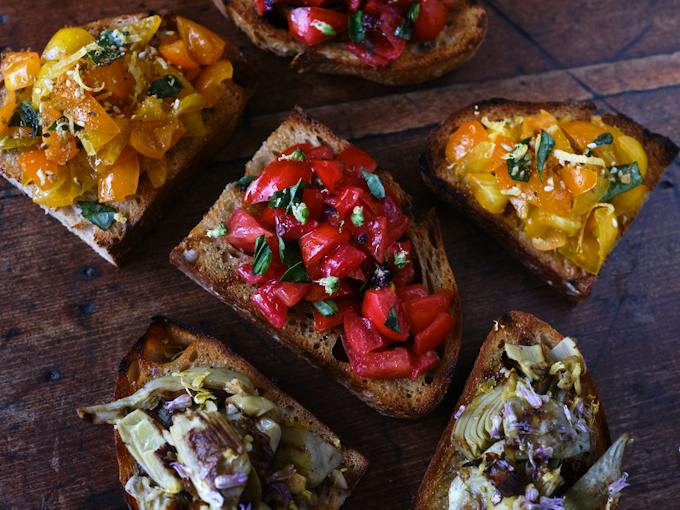

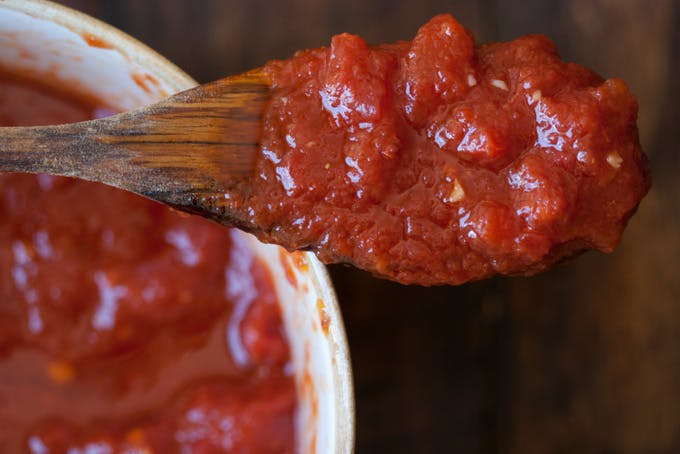
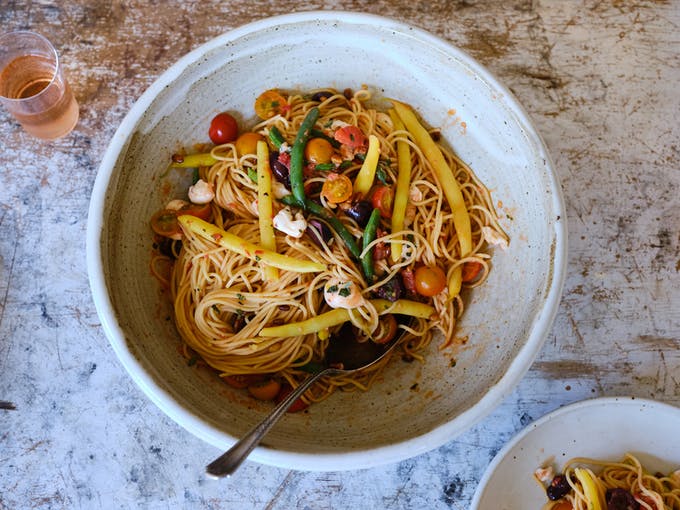
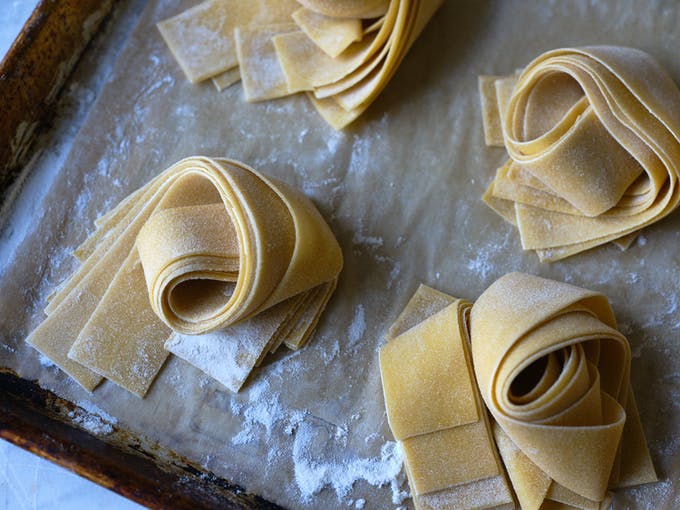

Post Your Comment
Comments
Just to be more precise "1 large bunch of basil" means at least 40 leaves... and consider that the original basil from Genova has large leaves... :)) This said, your recipe is very good and tasty :)
Wow, imagine such a little thing like hand chopping instead of machine chopping! I can see the difference and can't wait to give it a try. I've lovely pots of basil plants growing on the patio!
Thanks for these ideas Heidi. I've been making a lot of asian pesto recently (with coriander and cashew nuts instead) and the texture was a bit smoother than I wanted it so I'll definitely try this way out next time (I've got one of those mezzaluna gathering dust in the cupboard too!)
Great post and very insightful. I'm going to try your technique, I like the idea of seeing beautiful specs of basil on my pasta.
I like to substitute walnuts sometimes... and sometimes, I like to add finely diced sun-dried tomato slices. YUM. Thanks for the new technique.
Oh I'm thrilled you posted this! I have an excellent recipe for a pomodoro sauce with basil pesto, but all the sauces I found at the grocers looked so pastey and not-so fresh. I can't wait to try it!
Thanks for sharing! I've never made pesto (I buy it from the supermarket) - but after reading this, I'm definitely going to give it a try.
It would be really great to fly to Italy as suggested in a previous comment. For now, I'm going to dream pesto dreams and make plans to grow basil this summer. The recipe here looks divine. I absolutely can't wait for the gnocchi; my husband and I gave up making it after several disasters, but we've been thinking of revisiting it. Thanks for the pesto recipe.
Thanks for sharing this recipe. I look forward to trying it!
Heidi - I'm curious . . . what is the origin of "Mattia"? Our son is Matteo. I had never heard the previous version. Thanks for a continually inspirational blog!
Dear Heidi, Thank you for sharing this recipe. The input that one should chop and mix alternately seems invaluable. The pics are inviting - as always. I really like your title - how to Make Pesto like an Italian Grandmother - cant say it any better. Will try this for sure.
May I contribute to the definition of a "perfect pesto"? To release the higher possible quantity of the essential oils contained within the basil leaves, pesto should be made with mortar and pestle (pesto comes from "pestare" which is the word definig the action). Using the mezzaluna or any sharp implement will lessen the taste. The cheese should be a 50/50 blend of (real) parmigiano and (real) pecorino (romano or from Sardinia). The olive oil should be "extra virgin" (expression which only makes sense when talking of olive oil...). Once ready the pesto can be used to season several types of pasta and even to correct a minestrone. However the "pasta al pesto" typically served in Ligurian homes uses "TROFIE" (a sort of hand made, short type of pasta) boiled together with potatoes and string beans. In my opinion it is possible to prepare excellent pasta dishes using all above suggestions, however to get the real thing I am afraid people should fly there. Ciao!
Some things are just worth the time and effort. It is time to put my basil plants in the ground so that I too can make pesto like an Italian grandmother!
Ah! Pesto. Long ago one of Sydney's top chefs taught me how to make pesto by hand and it revolutionalised my life. I make it in the mortar and pestle. First, add the basil leaves and bruise them with the pestle. Add a little salt to assist grinding. As they begin to break down, add chopped garlic and then the pine nuts. Lastly add the cheese and then olive oil. The texture is much as you have described - perhaps a little more rustic - and the taste is amazing. For endless variations, use nuts instead of pinenuts - cashews and macademias work well. Use coriander rather than basil. Add some young spinach to the basil. Stir finely chopped tomatoes through the final product. Oh endless imagination....... Scuse me I am off to make some pesto.
wow! thanks for sharing that technique, it does not seem extremely complicated but pesto this way will definitely taste better!
You can substitute nuts like pecans or almonds, they must be toasted, it wil taste different but good. You can substitute cilantro for basil as well - great on burritos!
Any ideas on a substitution for the pine nuts my husband is deathly allergic to?
I make my pesto in my big old granite mortar and pestle (used also for making Thai curries). I think it turns out much better than a food processor, but my theory is that bruising all the ingredients together brings out more flavor. It takes me about 15 - 20 minutes total. I start with nuts, then garlic, then leaves, lastly olive oil and cheese (and add oil also as I go).
Awesome! Thanks for this recipe. I've been looking forward to it ever since you mentioned it yesterday at the book signing. I can't wait for the gnocchi recipe to use it with!
Delightful! My mother makes a good pesto but she's always looking for more "oomph"; I'll have to pass this on to her.